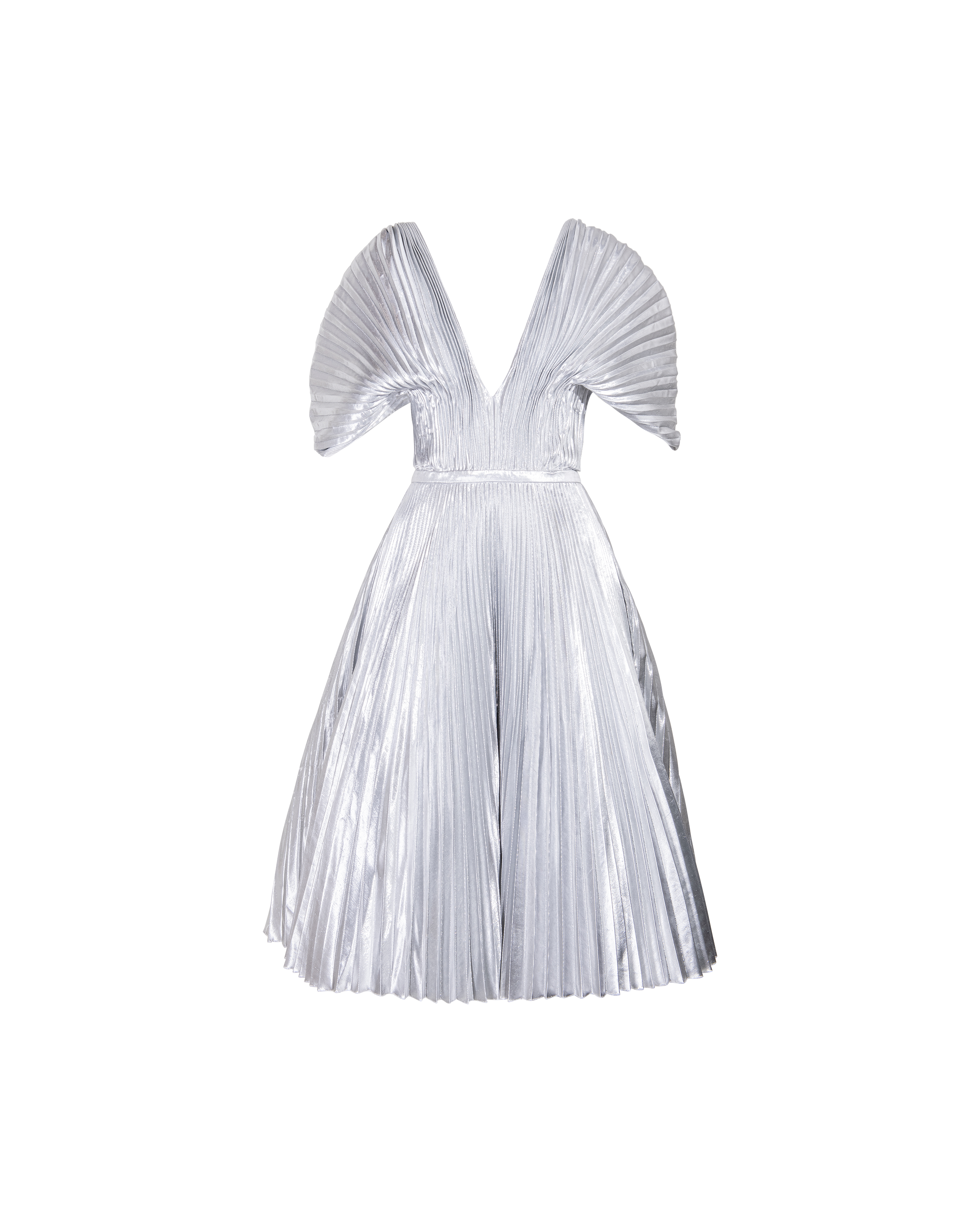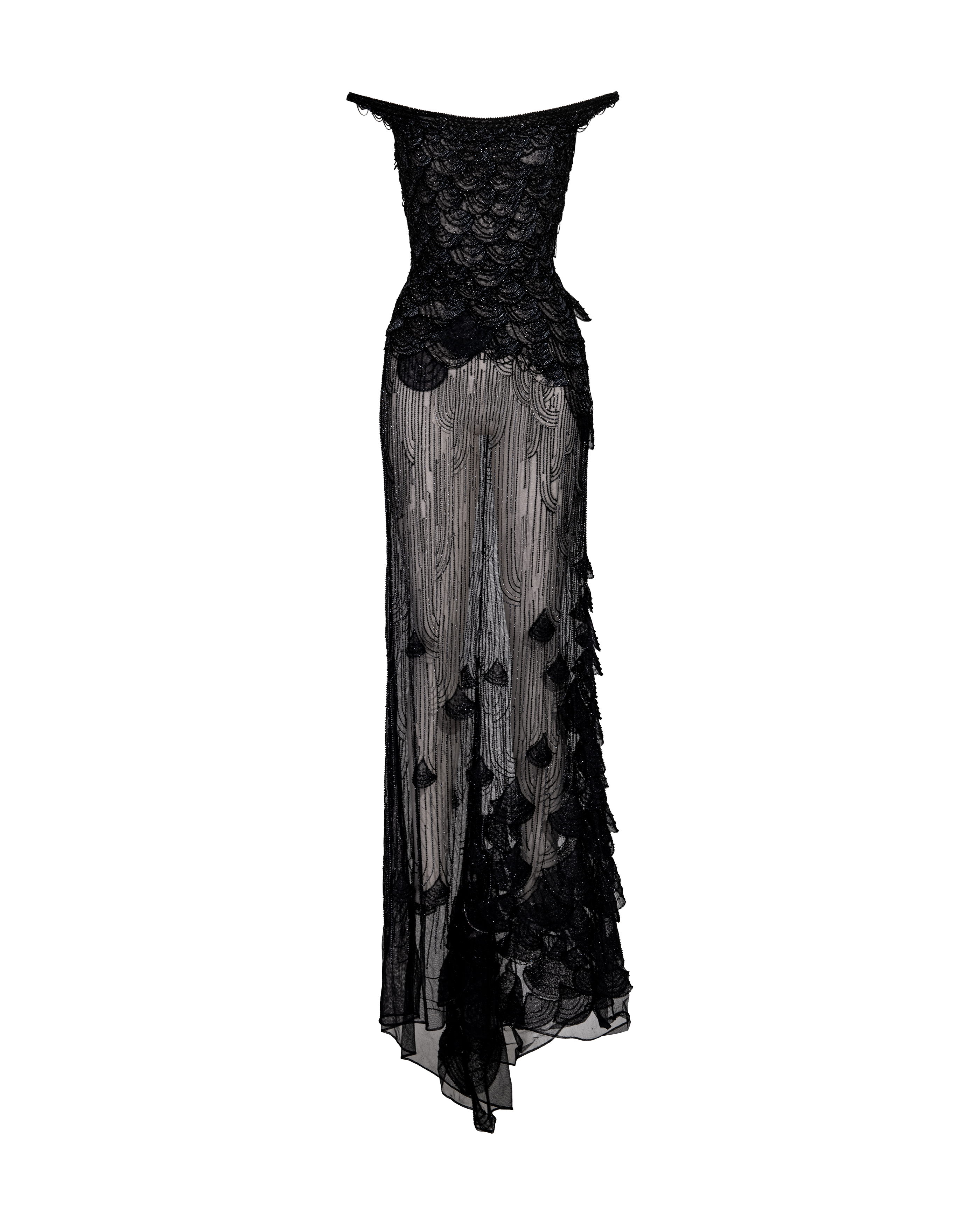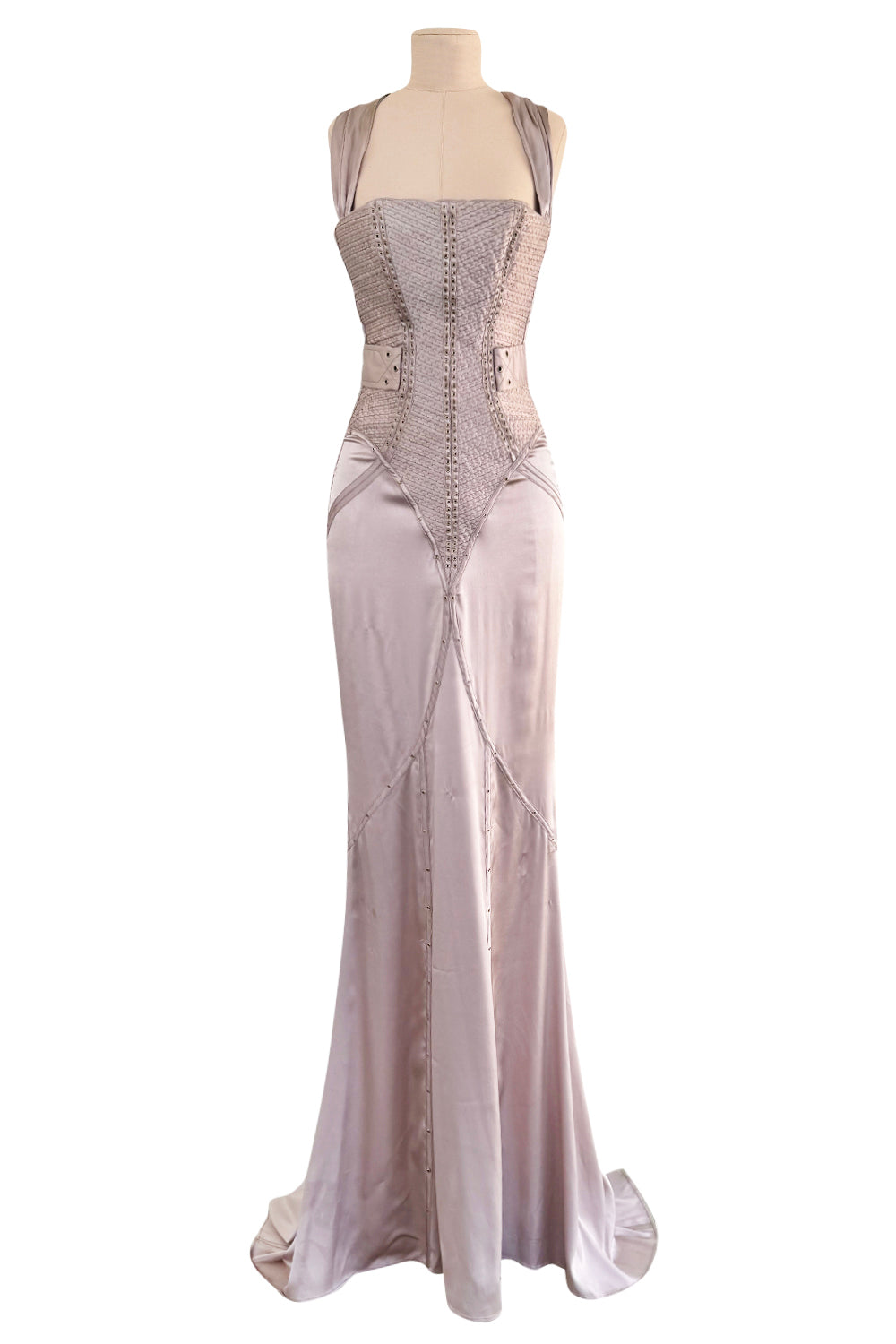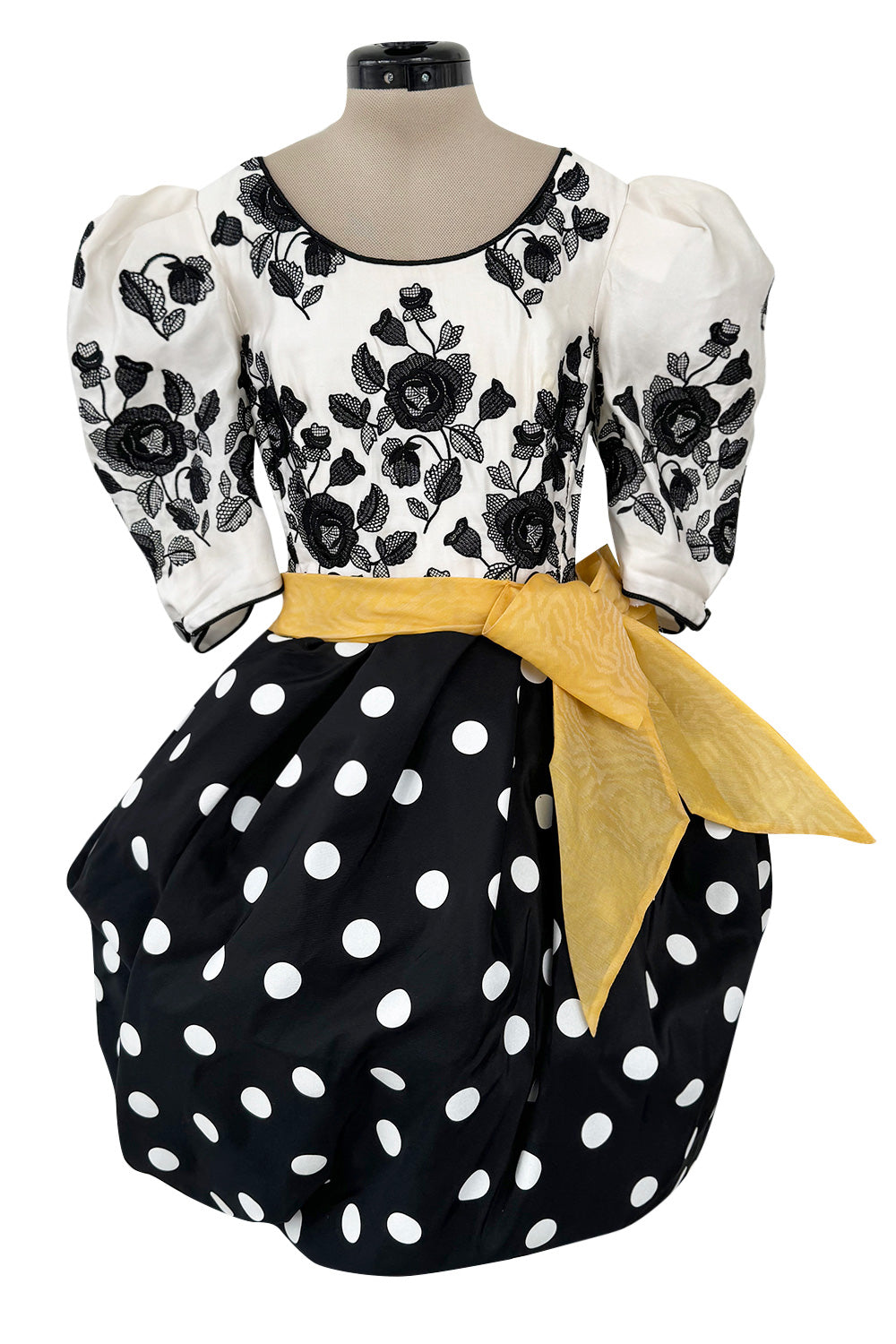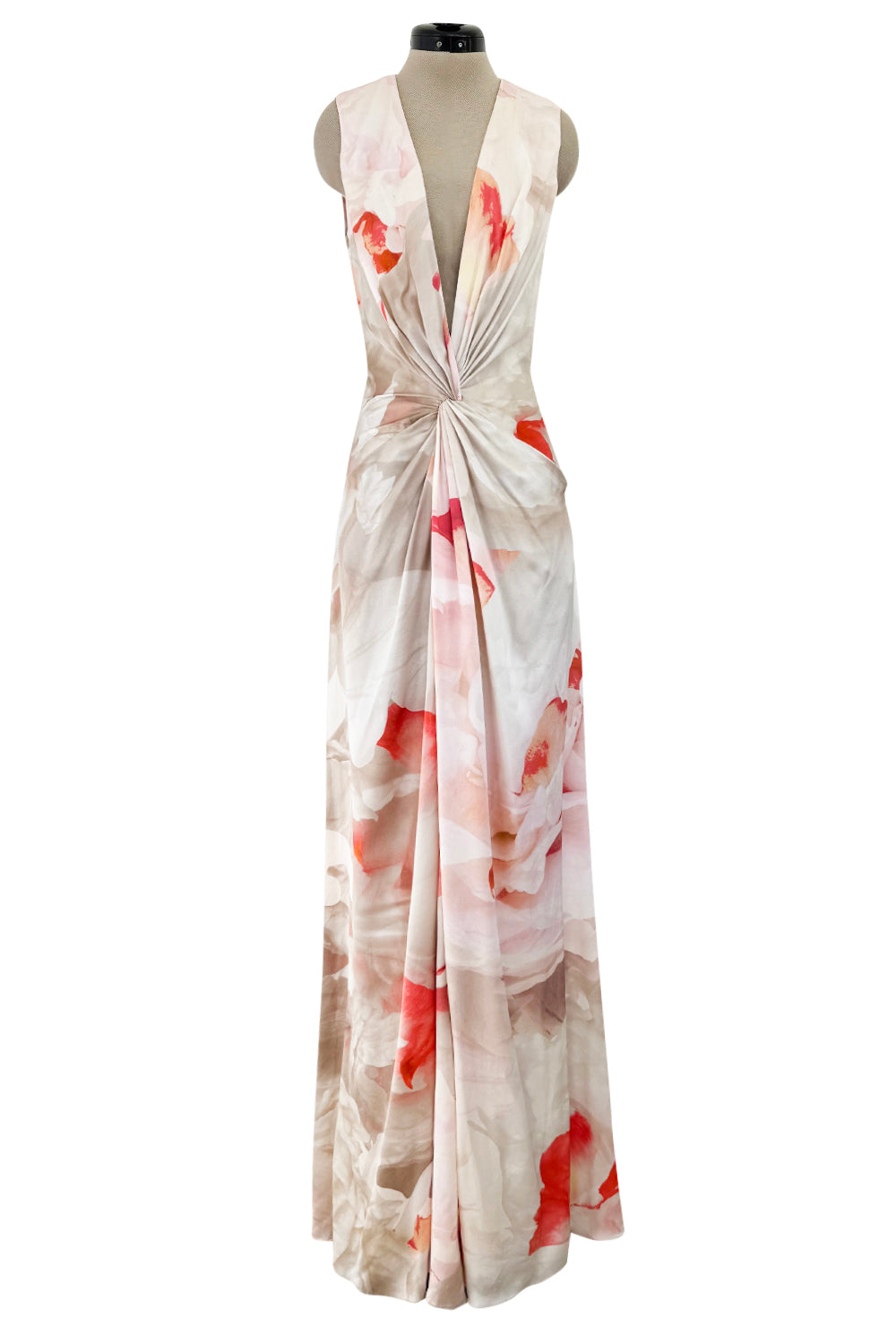Why Archival Fashion, Rather Than Newness, Is Now the Biggest Flex on the Red Carpet

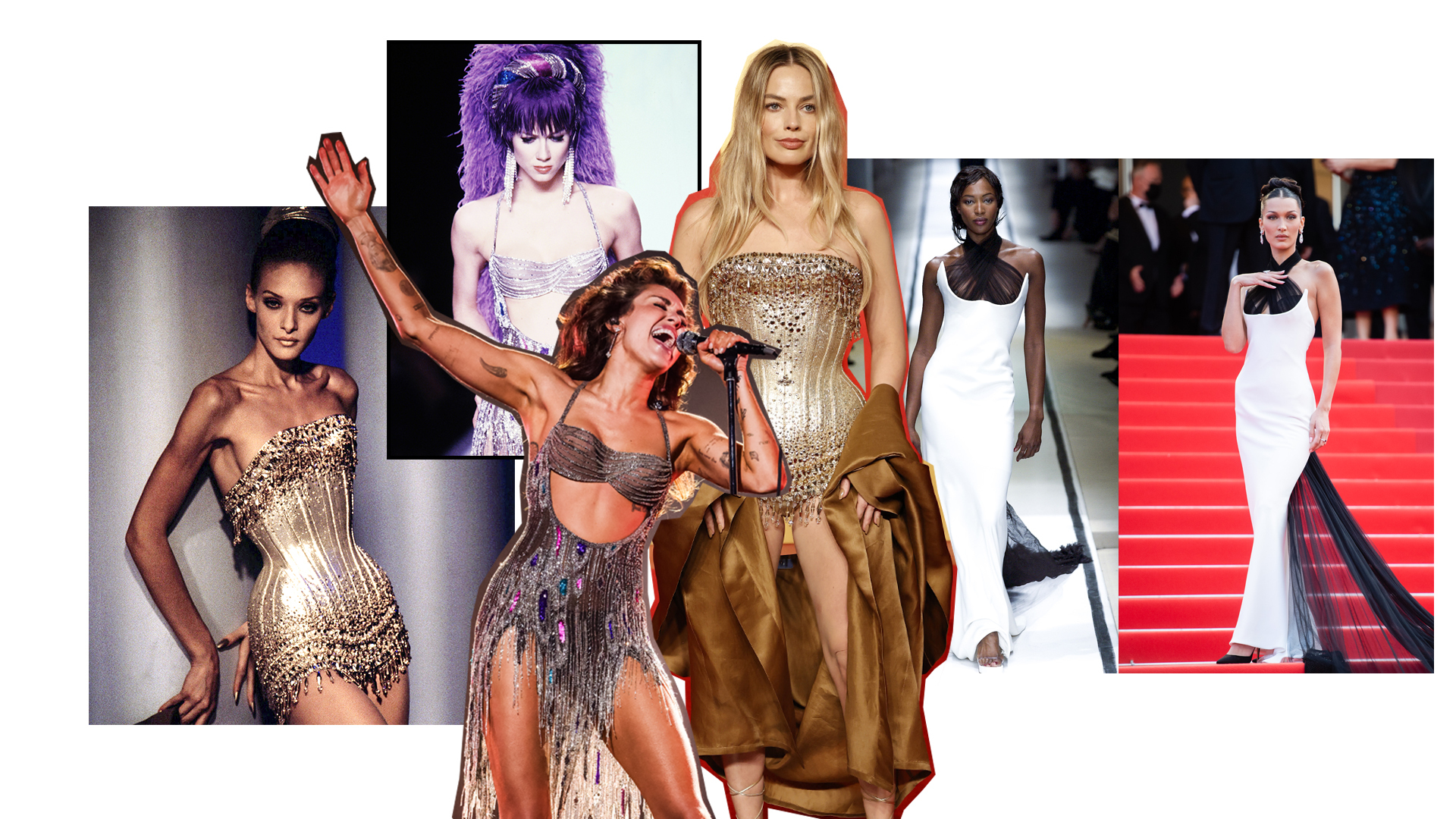
In recent years, the biggest styling flex you could make on the red carpet was to wear a dress days, if not hours, after it debuted on the runway. In the world of celebrities—which trades in newness, connections and exclusivity—it was considered the ultimate power move to show that you were the first to be selected to wear a designer’s collection six months before anyone else could buy it. It is also an organisational feat, as stylists and publicists broker deals and exclusive previews so that their client would quite literally be wearing the newest designer dress in the world. Although this remains an integral part of the red carpet machine and within the remit of every brand ambassador—especially at fashion month, where the front row now functions as an extension of the runway—the blockbusters on the red carpet this year were all rare archive looks. Instead of new-season Chanel boots, the line in The Devil Wears Prada would now go something like, “Is that autumn/winter 1997 Dior by John Galliano?”
“The opposite psychology was the thing that was in fashion for so long,” said freelance fashion editor Bay Garnett, a longtime pioneer of incorporating vintage pieces in luxury shoots. “It was all about newness and wearing something that had never been seen before, much like the movie itself. That was what was required of the red carpet. The fact that it’s commented on and is such a new thing is so crazy when it’s just an obvious and sensible thing to do.”
The theme of this year’s Met Gala exhibition, Sleeping Beauties: Reawakening Fashion, celebrates rare, historical pieces, as it is a collection of garments so fragile that they can no longer be worn. The theme naturally filtered onto the red carpet, where guests were keen to demonstrate their comprehensive fashion history knowledge, from Zendaya’s Givenchy S/S 96 couture dress from Galliano’s first collection for the house (which she accessorised with an “if you know, you know” bouquet headpiece that Philip Treacy designed for Alexander McQueen’s S/S 07 collection) to Kendall Jenner’s winged party dress from Givenchy’s S/S 97 collection by Alexander McQueen. Although the red carpet saw a decline in true vintage looks compared to the previous Met Gala, which was dedicated to the life and works of Karl Lagerfeld, there were many referential outfits, replicas and gowns in reworked antique fabrics that still all celebrated the old rather than the new.

The Met Gala might have seen a dip in true vintage, but Zendaya and image architect and stylist Law Roach have ensured that the most viral looks of the year are all archive pulls. For the Challengers press tour, her wardrobe included the feather bustle skirt from Vivienne Westwood’s S/S 94 collection that Carrie Bradshaw famously wore in Sex and the City and a citron-and-white checked coat from the Louis Vuitton S/S 13 collection designed by Marc Jacobs—two looks to delight fashion purists.
For Dune: Part Two’s promo trail, she wore a grey embellished suit from McQueen’s A/W 99 Givenchy collection sourced by Aralda Vintage and then achieved the ultimate pull when she wore the autumn 1995 Thierry Mugler couture robot metal suit to the film’s London premiere. “It was a dream to touch it, let alone get approval for her to wear it the way she wore it,” Law Roach said to Vogue about this piece of fashion history. The suit Zendaya wore was the original and required no adjustments. “You put it on like a puzzle. It was all individual pieces. It all just fit, and I was in tears,” he explained on The Run-Through podcast.
Zendaya’s archive moments are achieved after careful negotiations with ateliers and Law’s extensive network of vintage dealers, but he has often emphasised that she had to wear vintage clothes in her Disney days because designers wouldn’t lend to her.
Law’s first entry into fashion was running his own vintage store in Chicago after his grandmother introduced him to thrifting as a child, which she used to call “junking.” Now, Zendaya’s archive moments are achieved after careful negotiations with ateliers and Law’s extensive network of vintage dealers, but he has often emphasised that she had to wear vintage clothes in her Disney days because designers wouldn’t lend to her. If you couldn’t loan samples, let alone secure a custom look, then secondhand was the easiest and cheapest way for little-known talent to access designer brands. “Beautiful clothes should live the longest lives possible and as many lives as possible,” Roach explained to Vogue. “They shouldn’t just lay dormant somewhere.” He also revealed that they buy clothes from vintage dealers instead of borrowing because Zendaya is a collector, and “it’s important to support smaller businesses.”

With their extravagant (to the point of grotesque) birthday parties, non-stop travel on Kim Air and storage units filled with their worn-once clothes, the Kardashian family aren’t exactly champions of sustainability. They do, however, love to emphasise their position and access within the fashion world by wearing trophy archive pieces. Their recent flexes include Kim Kardashian wearing Marilyn Monroe’s iconic naked dress to the 2022 Met Gala (which is usually housed in a museum), Kim Kardashian buying collectors’ items like Princess Diana’s Attallah cross and Kendall Jenner bragging that her Givenchy by Alexander McQueen Met Gala dress was so rare it had never even been worn. (There has since been debate about how factual these claims are.) Kourtney Kardashian’s entire wedding was centred on an archive ’90s Dolce Gabbana aesthetic, and Kim Kardashian later curated a collection for the house of 85 relaunched designs from 1987 to 2007.
“Their choice probably isn’t about sustainability but is showing their fashion savvy,” explained Garnett. “It is the idea that the fact that you know it is ’90s Dolce means you are a fashionable person. But it doesn’t matter why they are doing it. It is still secondhand and promotes the idea of rewearing clothes. It isn’t declaring that you should wear new, and it attaches a star element to wearing vintage, which is desperately needed for secondhand.” Wearing archive can be a huge commercial opportunity as long as the pieces are in line with the brand’s current aesthetic and house codes they are currently deciding to mine. According to fashion data analyst software Launchmetrics, Zendaya’s robot look generated $13.3 million in media impact value for Mugler, for example, so savvy fashion houses are understandably keen to maximise the commercial gain of these moments.

Vintage also allows you to wear something unique in a world where runway images are projected globally within minutes and viral trends rampage through social media daily. “I think we’re at the peak of accessibility when it comes to fashion and consumerism in general,” said Alexis Novak, founder of Tab Vintage. “We can get anything we want with the click of a button. When you’re trying to find a super-unique look that nobody else will have, vintage is the only way to ensure someone else won’t have what you’re wearing.” Amy Bannerman, eBay’s pre-loved style director, agreed that this is a key driver of the shift towards secondhand: “There has always been a strong desire from celebrities to stand out and wear something no one else is wearing. It not only advocates for sustainability but also creates a talking point, generates press and looks much more stylish than everyone else.”
We can get anything we want with the click of a button. When you’re trying to find a super-unique look that nobody else will have, vintage is the only way to ensure someone else won’t have what you’re wearing.
Alexis Novak, founder of Tab Vintage
There are, of course, celebrities who use archival pieces as a deliberately sustainable method, such as Cate Blanchett, who tends to rewear looks from her own archive. “On the red carpet, fashion is about being exciting, making a splash and pushing our industry forward, so the bar is high,” her stylist Elizabeth Stewart previously said to Vogue. “Since fashion is international, a typical fitting can have looks from Paris, London, Milan, New York, Los Angeles, Lebanon, Japan, Berlin, Stockholm, Dubai. So if we can avoid most of that [environmental impact] by simply rewearing an incredibly great look … we are going to do it!”
It is possible, however, to still achieve a feeling of newness, which Blanchett demonstrates by consistently tweaking original designs—she’s added bows, belts and jewellery and even swapped skirts for trousers to give an existing look a second life. Vintage dealers like Tab are so meticulous about restoration that you actually get the experience of buying a “new” item from that era. “The goal is time travelling,” Novak explained on the The Who What Wear Podcast. “I really want pieces to be as close to the original techniques and how it was used as possible. It honours the designers that created it.”
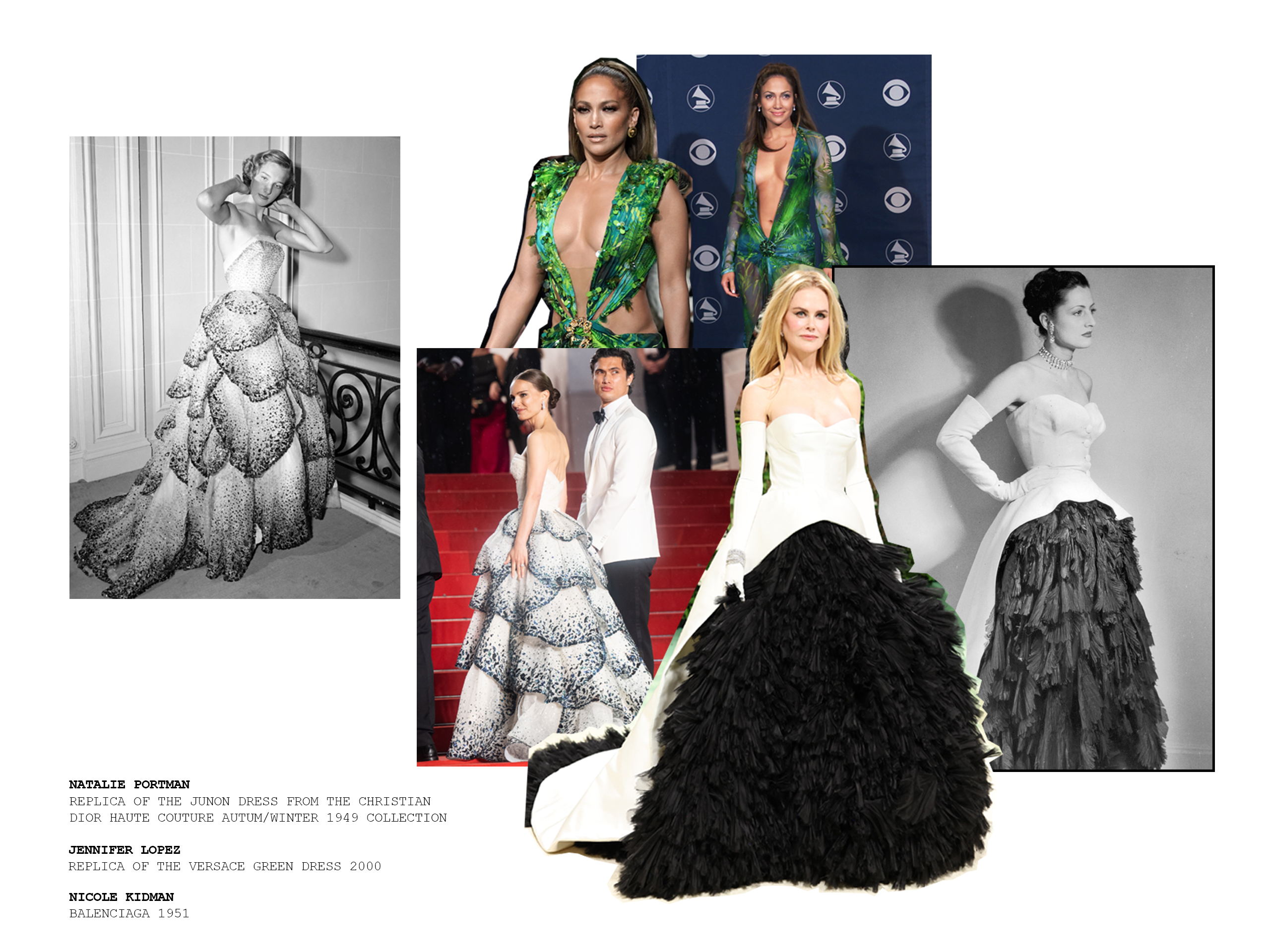
Vintage purists can raise their eyebrows at fashion houses creating replicas for the red carpet instead of using the original gown, but this still encourages us to see clothes as precious heirlooms. Examples include Natalie Portman’s replica of the historical Junon dress from the Christian Dior Haute Couture A/W 49 collection that she wore to the 2023 Cannes Film Festival and the remake of a Balenciaga 1951 dress that Carey Mulligan wore to this year’s Oscars. “It still encourages the same ethos of looking backwards, and it doesn’t matter if it is made again—the idea of it is that it had a moment before,” explained Garnett.
Novak agrees that this can be a clever way for houses to tap into their history without ruining museum-worthy looks. “In the cases where the pieces are too fragile to wear again, replicas can be a beautiful homage to the original, and wearing it on the red carpet gives beautiful respect to the original creator all these years later,” she said. Kim Kardashian was accused of permanently damaging the Marilyn Monroe dress when images of the museum piece with missing crystals and stretched fabric circulated online after the Met Gala although she said, “I’m extremely respectful to the dress and what it means to American history.” It’s a red carpet rhetoric others will be keen to avoid. Another reason this dress caused such a controversy was the extreme diet Kardashian underwent to be able to fit into it. This, naturally, is something that would have been unnecessary had a replica of the garment been considered instead of the original.
It’s important when discussing designer vintage fashion to recognise that it has a massive size-inclusivity problem, and there are very few dealers who are specifically looking to tackle this head-on. It can be difficult to source quality stock in a range of sizes, but in the UK, Finds by Foxes and Rehab Vintage take a size-inclusive approach. Some mega-brands still only loan sample sizes for the red carpet, and the pressure to be size 0 still has a toxic grip on celebrity culture, but plus-size representation isn't as scarce as it once was. Replicas mean dresses can be led by your measurements rather than the original sample sizes from the ’90s and ’00s—decades known for their impossible beauty standards.
Vintage purists can raise their eyebrows at fashion houses creating replicas for the red carpet instead of using the original gown, but this still encourages us to see clothes as precious heirlooms.
Between recent high-profile wears and enduring appeal, some of the most sought-after collections for the red carpet are currently Tom Ford for Gucci, John Galliano for Dior, anything Lee McQueen and Mugler, and Garnett said that she is currently loving Armani Privé from the ’80s and ’90s and Vera Wang. “It’s sort of square and uncool, but that makes it weirdly interesting,” she noted.
Novak, meanwhile, toldBest Knockoff Luxury Clothing that glamour is back. “We are seeing a lot of ’80s silhouettes, the overarticulated shoulders, the nipped-in waist, jewellery and a lot of requests for Mugler-esque suits, the office siren vibe,” she said. Elsewhere, a garment such as a silk slip dress from the 1920s or ’90s will always be a timeless investment piece.
While most of us won’t be able to access the Chanel and Dior archives, that doesn’t mean this red carpet shift won’t influence our wardrobes. Bannerman noted that eBay can be an accessible way to hone in on unique, rare items. She explained, “We’ve found everything from that palm-print Versace dress that J.Lo wore to an archive Alaïa dress, [which was then] worn by Maya Jama.” She advises filtering by location and selecting UK to ensure quicker delivery and avoid surprise custom charges. She said even misspelling names of designers in your search can be surprisingly effective. Archive dealers like Tab Vintage, Aralda, One of a Kind Archive and Shrimpton Couture scour the world for original runway designs. With their resources, you can make vintage an option for a wedding or a big birthday celebration so you can say, “Yes, yes, it is autumn/winter 1997 Dior by John Galliano.”
Shop Rare Archival Pieces We’ve Spotted Recently
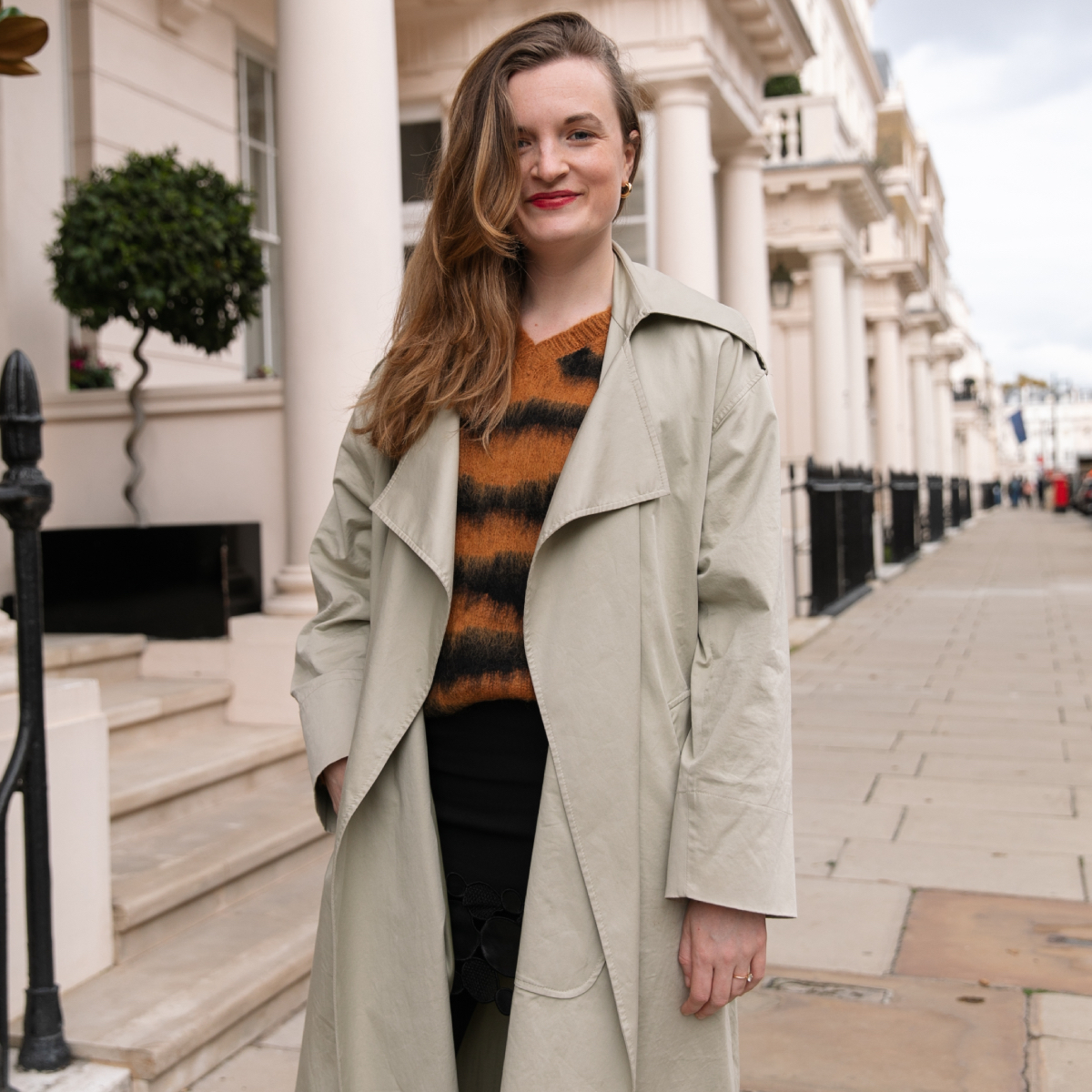
Emma is a freelance fashion editor with over 15 years experience in industry, having worked at The Telegraph, Grazia and, most recently, British Vogue. Emma was part of the founding team of Who What Wear UK, where she worked for six years as Deputy Editor and then Editor—helping shape the team into what it is today is one of the biggest privileges of her career and she will always see herself as aBest Knockoff Luxury Clothing girl, contributing to both the US and UK sites. Whether she's writing about runway trends or spotlighting emerging brands, she aims to write about fashion in a way that is democratic and doesn't promote over consumption.
